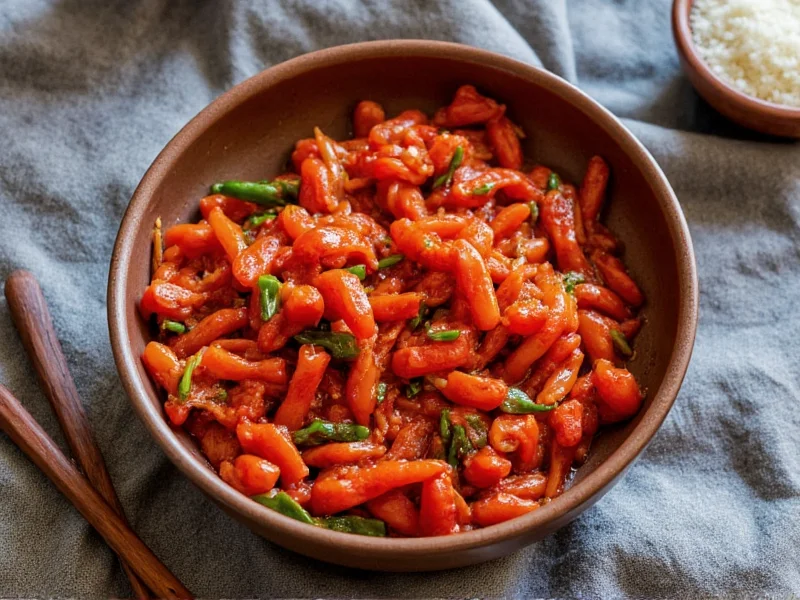When you ask what's Szechuan, you're exploring one of China's most influential regional food cultures. The term describes both the Sichuan province in southwestern China and its renowned culinary style that has captivated palates worldwide. Understanding what Szechuan means requires examining both its geographical roots and culinary characteristics.
Geographical Context of Szechuan
Sichuan province, located in southwestern China, has a rich history dating back thousands of years. The name "Sichuan" literally means "Four Rivers," referring to the province's major waterways. Historically isolated by mountains, this region developed a unique culinary identity distinct from other Chinese provinces. The humid climate influenced the development of Szechuan cuisine's signature spicy elements, as locals discovered that chili peppers and Szechuan peppercorns helped combat dampness.
Defining Szechuan Cuisine
When people inquire what's Szechuan food, they're typically referring to the bold culinary tradition characterized by several defining elements:
| Characteristic | Description |
|---|---|
| Mala Flavor | The signature "mala" sensation combining ma (numbing from Szechuan peppercorns) and la (spiciness from chili peppers) |
| Complex Seasoning | Use of doubanjiang (fermented broad bean paste), garlic, ginger, and multiple chili varieties |
| Cooking Techniques | Masterful use of stir-frying, steaming, and braising with precise heat control |
| Flavor Balance | Harmonizing spicy, sour, sweet, salty, and umami elements in single dishes |
Understanding the Spelling: Szechuan vs. Sichuan
The spelling variation what's Szechuan versus what's Sichuan reflects different romanization systems. "Szechuan" comes from the older Wade-Giles system, while "Sichuan" follows the modern Pinyin system adopted by China in the 1950s. Both refer to the same place and cuisine. In Western contexts, "Szechuan" remains common on restaurant menus, while "Sichuan" appears in academic and official Chinese contexts.
Signature Ingredients That Define Szechuan Cooking
The distinctive character of Szechuan cuisine comes from specific ingredients that create its famous flavor profile:
- Szechuan Peppercorns (huājiāo): Not true peppercorns but the dried husks of Zanthoxylum plant berries that create a tingling, numbing sensation
- Doubanjiang: A fermented broad bean and chili paste that forms the flavor base for many dishes
- Dried Red Chilies: Used whole or crushed to provide heat and depth
- Preserved Vegetables: Like yacai (fermented mustard tuber) that add complex sour notes
- Rice Vinegar: Provides balancing acidity to counter the heat
Popular Szechuan Dishes You Should Know
When exploring what's Szechuan cooking, certain dishes exemplify the tradition's essence:
- Kung Pao Chicken (Gong Bao Ji Ding): Diced chicken with peanuts, vegetables, and chili peppers
- Mapo Tofu: Soft tofu in a spicy sauce with minced meat and Szechuan peppercorns
- Twice-Cooked Pork (Hui Guo Rou): Sliced pork belly stir-fried with vegetables in doubanjiang sauce
- Hot Pot (Huǒ Guō): Communal dining experience with simmering broth for cooking meats and vegetables
- Dan Dan Noodles: Noodles with minced pork and a spicy, numbing sauce
Common Misconceptions About Szechuan Food
Many people searching what's Szechuan encounter these misunderstandings:
- It's all about extreme heat: Authentic Szechuan cuisine emphasizes flavor complexity, not just spiciness. Many traditional dishes aren't extremely hot.
- Szechuan peppercorns are spicy: They create a tingling/numbing sensation (má), not heat (là).
- All Chinese food is Szechuan: China has eight major culinary traditions, each with distinct characteristics.
- Szechuan food is oily: While some dishes use oil for flavor infusion, authentic preparation focuses on precise oil usage.
Global Influence of Szechuan Cuisine
The question what's Szechuan has gained international relevance as this culinary tradition has spread worldwide. Szechuan restaurants now operate globally, though often adapting to local palates. In the United States, for example, many "Szechuan" dishes feature sweeter profiles and less heat than their authentic counterparts. The 2005 recognition of Sichuan cuisine as part of China's intangible cultural heritage has further elevated its global status.
Experiencing Authentic Szechuan
To truly understand what Szechuan represents, seek restaurants that specialize in regional Chinese cuisine rather than generic "Chinese" establishments. Look for menus featuring traditional Szechuan dishes with proper ingredient listings. The best Szechuan cooking achieves balance—where the numbing and spicy elements enhance rather than overwhelm other flavors. When properly executed, Szechuan cuisine offers a multi-dimensional sensory experience that explains its enduring popularity.
What's the difference between Szechuan and Hunan cuisine?
While both are spicy Chinese regional cuisines, Szechuan features the distinctive mala (numbing-spicy) flavor from Szechuan peppercorns, whereas Hunan cuisine focuses on pure heat from fresh chilies without the numbing element. Hunan dishes tend to be oilier and feature more smoked and cured ingredients.
Why does Szechuan food make my mouth tingle?
The tingling sensation comes from hydroxy-alpha-sanshool in Szechuan peppercorns, which stimulates nerve endings in your mouth. This unique numbing effect (called "ma" in Chinese) is a signature characteristic of authentic Szechuan cuisine and complements the spicy heat from chili peppers.
Is all Szechuan food extremely spicy?
No, this is a common misconception. While Szechuan cuisine features bold flavors, authentic preparations emphasize balance. Many traditional Szechuan dishes incorporate sour, sweet, and salty elements alongside spicy notes. The cuisine's complexity comes from harmonizing multiple flavors, not just maximizing heat.
What's the most authentic Szechuan dish to try first?
Mapo Tofu represents an excellent introduction to authentic Szechuan cuisine. This dish features soft tofu in a savory sauce with minced meat, fermented bean paste, and Szechuan peppercorns that demonstrate the signature mala flavor profile without overwhelming heat. It showcases the cuisine's balance of textures and flavors.
Can I make Szechuan food at home without special ingredients?
While authentic Szechuan cooking requires specific ingredients like doubanjiang and Szechuan peppercorns, you can create simplified versions at home. Substitute with gochujang for some depth, black pepper for partial numbing effect, and regular chili flakes. However, for true Szechuan flavor, investing in authentic ingredients from Asian markets yields significantly better results.











 浙公网安备
33010002000092号
浙公网安备
33010002000092号 浙B2-20120091-4
浙B2-20120091-4